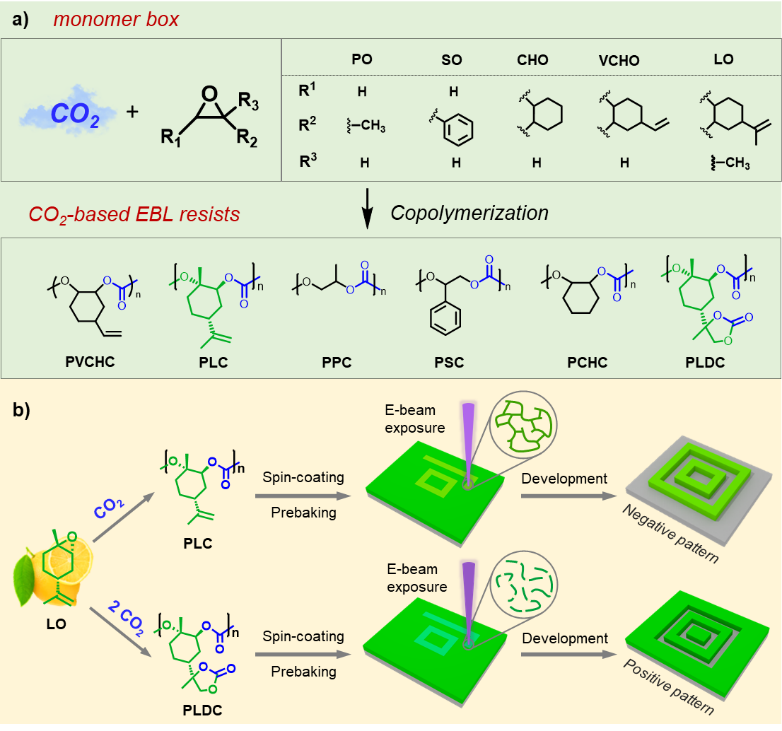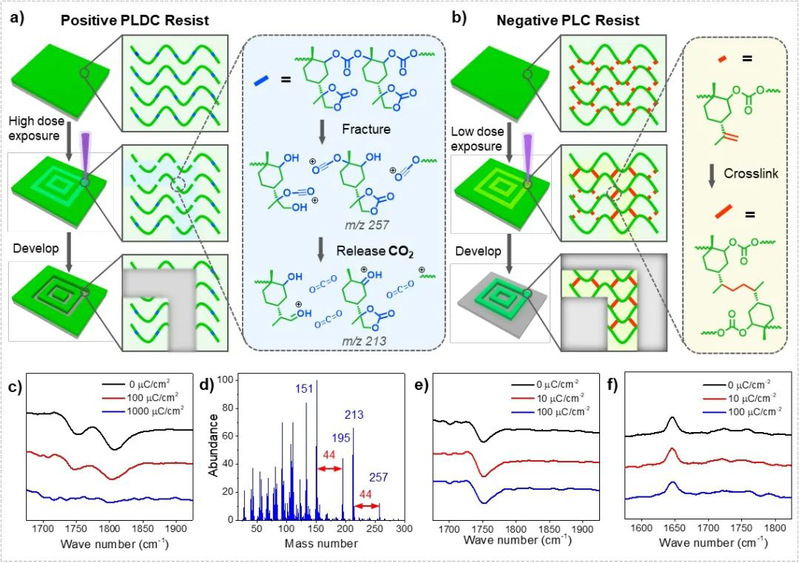Researcher Guangpeng Wu Reported The High Sensitivity CO2-Based Electron Beam Photoresist
Time: 2020-12-24 visit times :81
In recent years, the research group of Guangpeng Wu at Zhejiang University has explored the application of CO2-PC (alternating copolymer of carbon dioxide and epoxy-alkane) as a microelectronic lithography material through interdisciplinary research for the first time. In 2017, they designed the AB type styrene propylene carbonate block copolymer (PS - b - PPC), and the interaction parameters is currently the industry commonly used styrene block copolymer, methyl methacrylate twice as much, and can make use of industry favored by rapid thermal annealing process on the chemical pattern implementation guide lithography, apply to the next generation of < 10 nm processors production (Nano Lett., 2017, 17, 1233-1239).

Scheme 1. The synthetic routes and patterning procedures of CO2-based positive and negative resists
Recently, they have further designed and synthesized ABA type styrene propylene carbonate block copolymer with half pitch of 6 nanometer, and achieved the etching of basic patterns commonly used in integrated circuits through international and domestic cooperation (Nat. Comun., 2020, 11, 4151). Currently, they cooperated with a number of researchers to develope a high sensitivity of positive and negative carbon dioxide based polycarbonate electron beam lithography glue. The highest sensitivity up to 1.3 μC/cm-2, and the minimum critical dimension is 29 nm, and the lower line edge roughness is 4.6 nm. Results were published online as CO2-Based Dual-tone Resists for Electron Beam Lithography Adv. Funct. Mater. 2020, doi: 10.1002/ ADFM.202007417.

Figure 2. The reactions and characterizations for the positive and negative resists during e-beam process.
Zhe Da Road 38, Hangzhou 310027, China
Tel : 86-571-87951308
Fax : 86-571-87951592
Email : ciciliu33@zju.edu.cn